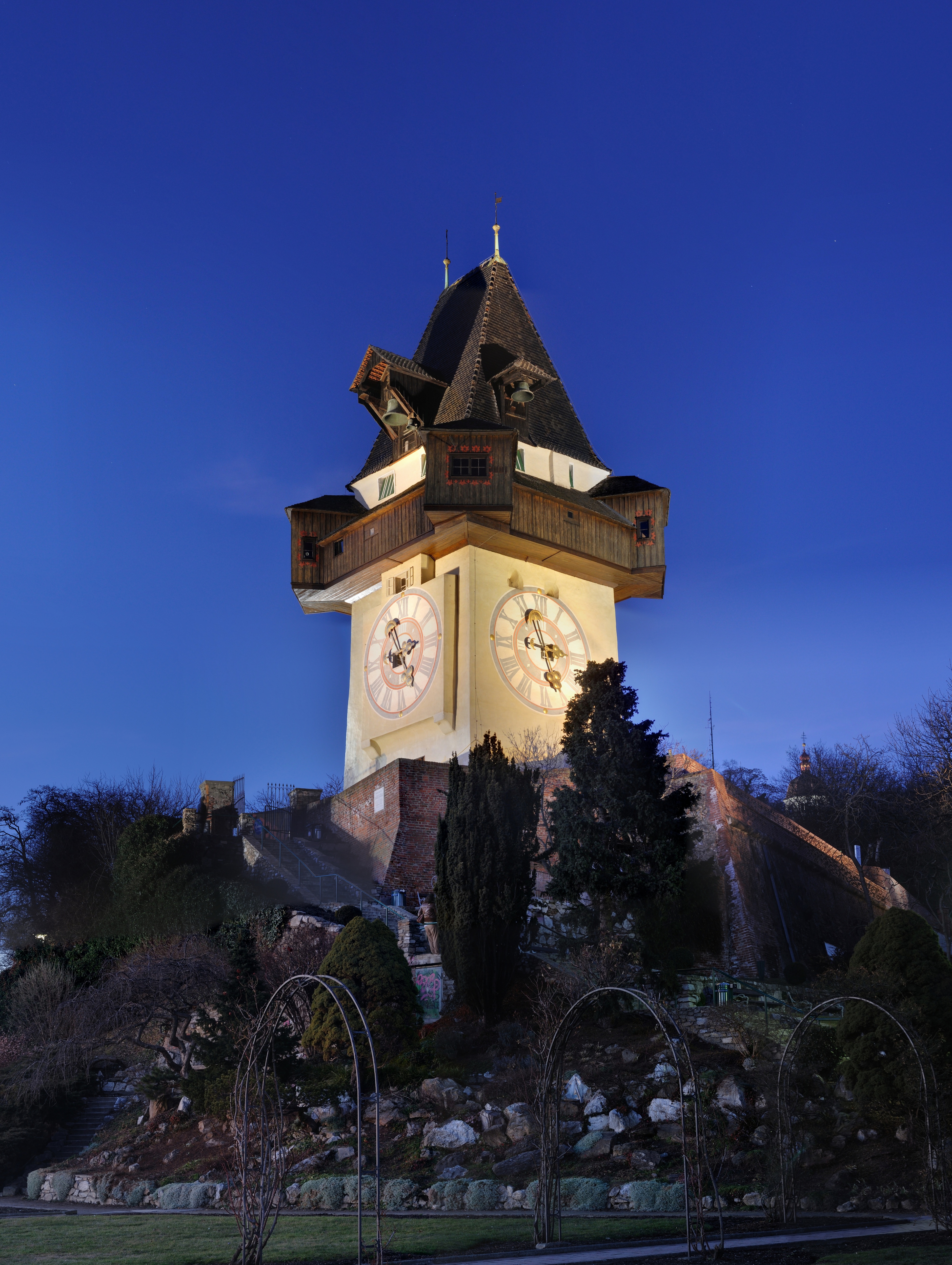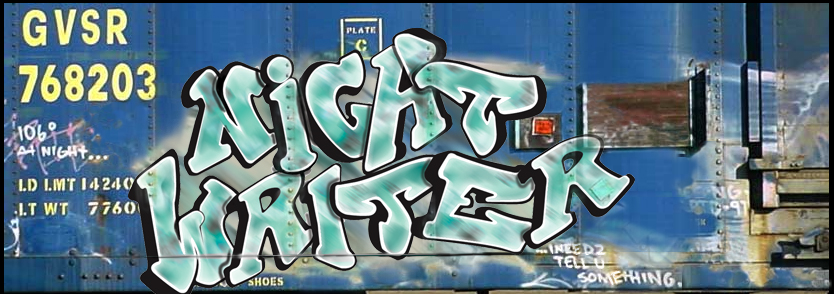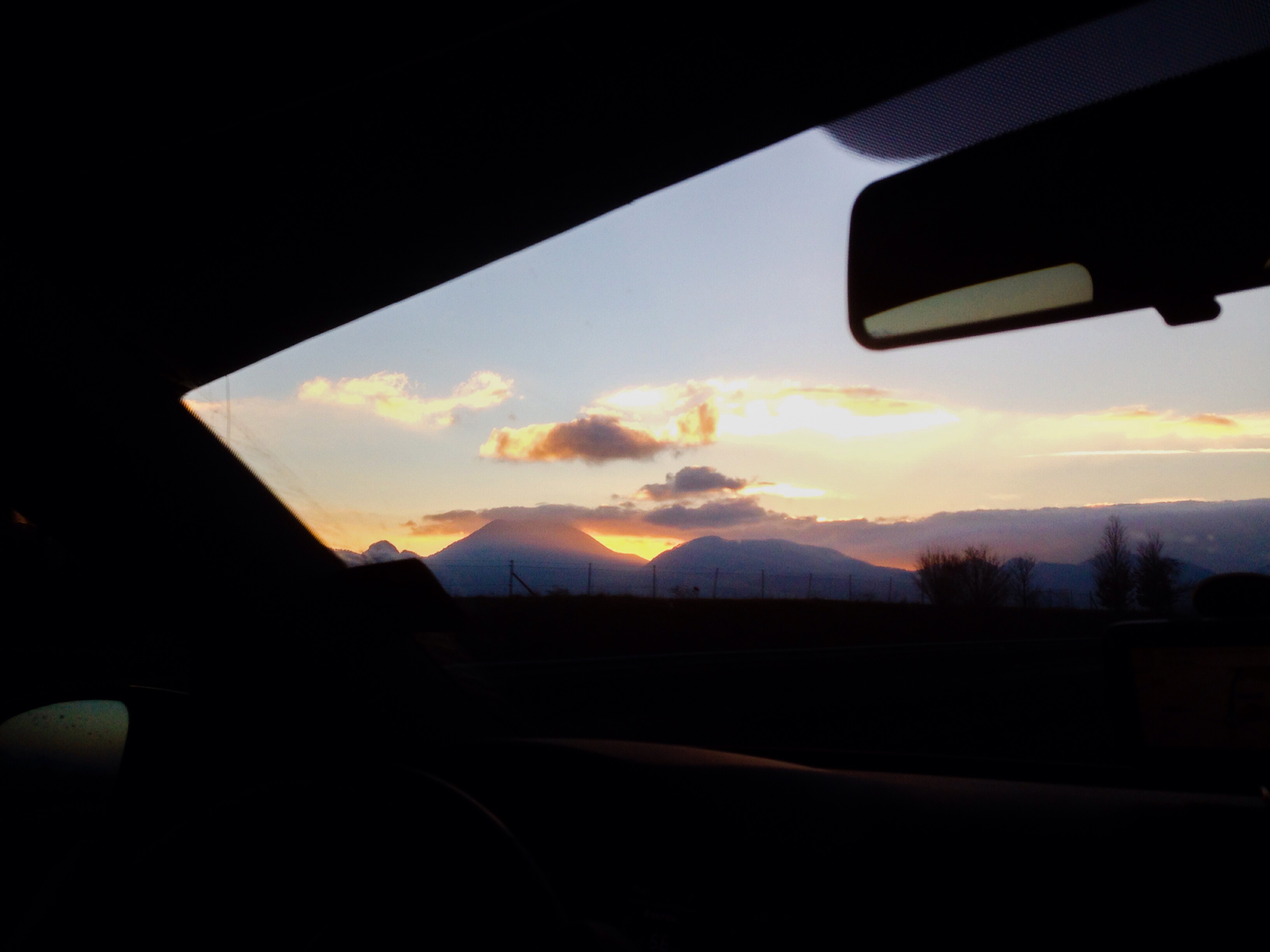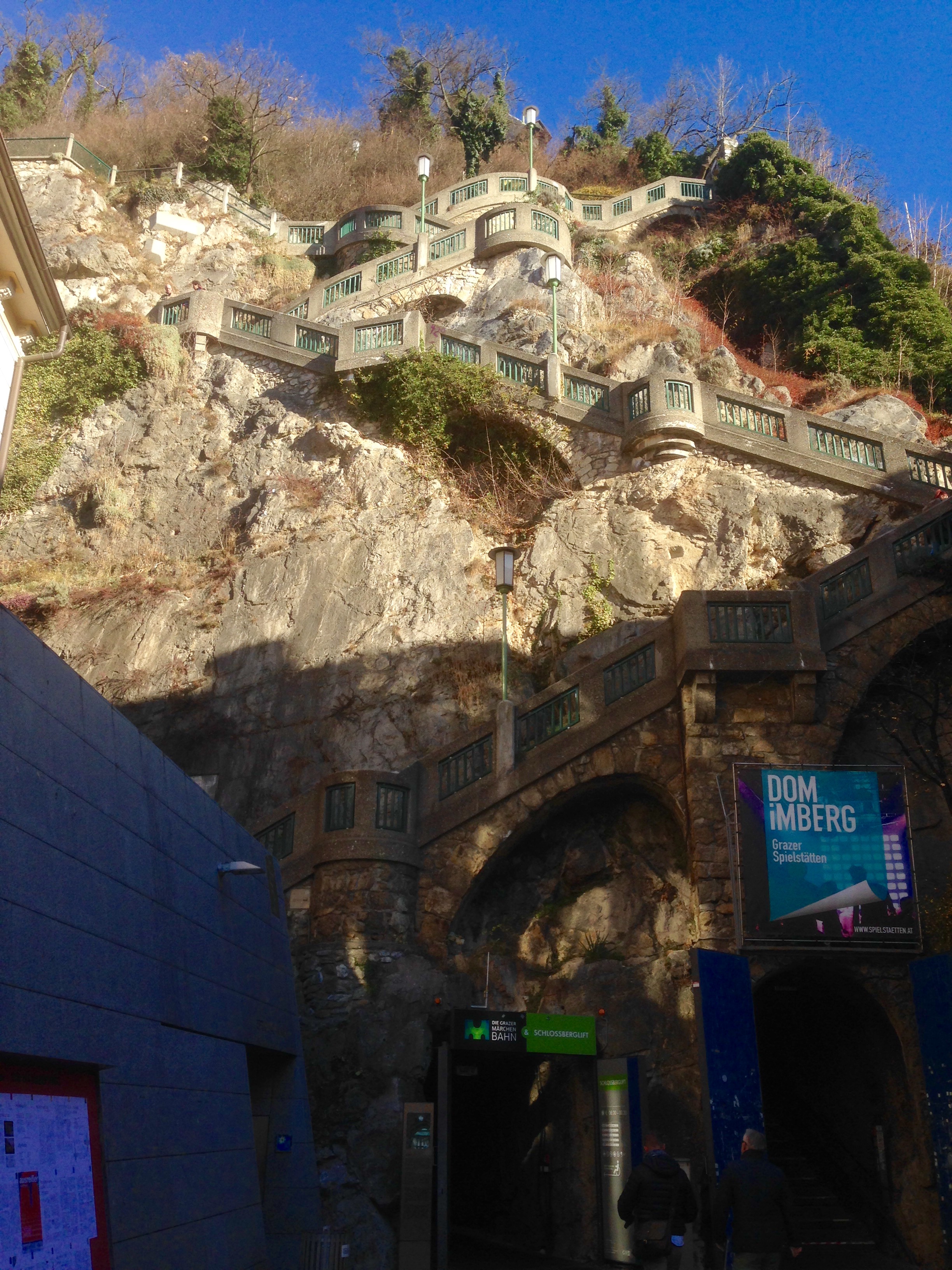by the Night Writer
After grazing our way around the Budejovice square it was time for Graz, Austria (pronounced “Grahts”). We turned south and headed into the Alps on our way to the capital city of Styria. Graz is only a few hundred meters above sea level, but you have to go up, over and through some mountains before you can get there. Gratz is in a basin, protected by the mountains, so it’s weather is influenced more by the Mediterranean than the colder and windier capital, Vienna. It’s much more temperate, which is good news for the college students: the city is home to six universities, in case you’re interested in studying abroad.
The warm weather followed us, so we didn’t have to contend with any snow as we navigated the mountains. We did go through some pretty long tunnels, though, which really messed with our GPS. It would lose the signal and give us instructions such as “turn left in 100 meters” – which really wouldn’t have been a very healthy thing to do since the end of the tunnel was still a couple of kilometers ahead. No doubt the tunnels made for a faster and safer trip than driving over the mountains, but they do tend to limit your view, which is too bad since we saw some pretty dramatic things when there were only clouds over our heads.
Graz is a relatively simple place to get around in. Essentially all public transit options run through the train station (the Haptbahnhof) and city center (Hauptplatz). The main square is very compact compared to Prague Old Town Square or the Budejovice square, but was jammed with vendors and Christmas Markets. Overlooking the square is the Schloßberg, a rocky hill that commands the area. We were told that the Schloßberg is very worth seeing, and my vestigial German vocabulary told me that “Schloß” means “Castle” so we spent some time looking for a castle. It turns out the castle no longer exists. It was such an impregnable fortress that even Napoleon couldn’t defeat it. Napoleon did manage to defeat the Austrians, though, without taking the castle – but demanded that the Austrians destroy the castle as part of the surrender terms (Treaty of Schönbrunn). The town itself paid a ransom to Napoleon to preserve the clock tower (the symbol of the town) and the bell tower. The grounds were later turned into a public park and it is a magnificent location for concerts and events, with a great view of the city. 













